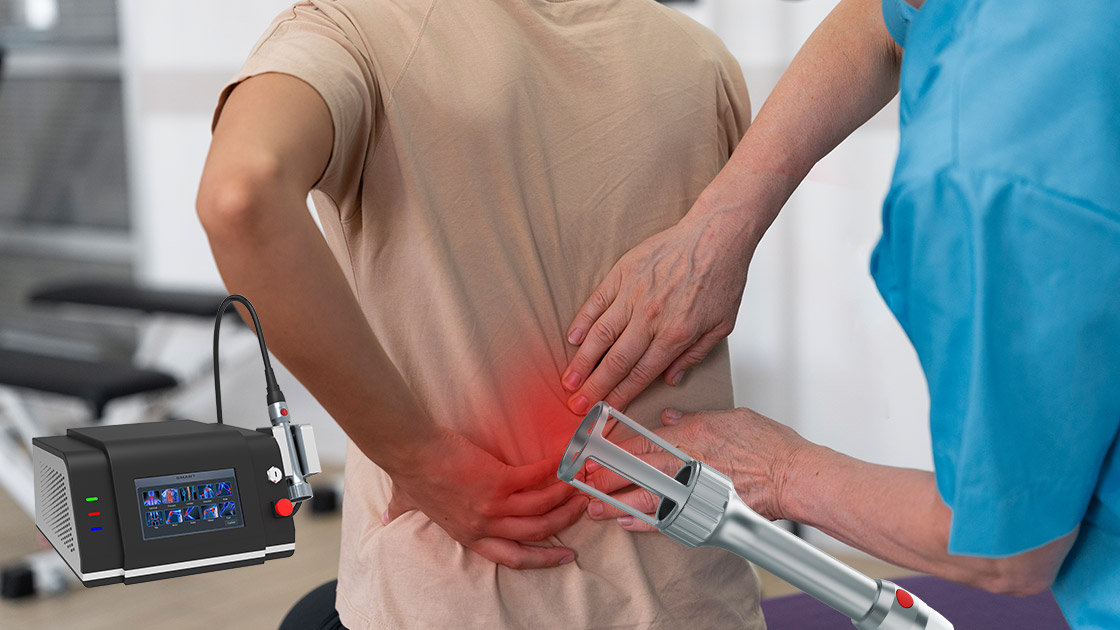Page Contents
Bulging discs are common and can cause significant discomfort, reducing quality of life. These discs cushion the vertebrae in the spine. When they bulge, they press on nearby nerves, causing pain, numbness, and weakness. Various treatment options exist, but Class 4 laser therapy has become a promising alternative. This article explores bulging discs, the role of Class 4 laser therapy, its effectiveness, comparisons with other treatments, and considerations for its use.
Overview of Bulging Discs
A bulging disc occurs when the outer layer of a spinal disc protrudes beyond its normal boundaries. This often happens due to age-related degeneration or injury. Unlike a herniated disc, where the inner gel-like core leaks out, a bulging disc stays intact but can still compress nearby nerves. This compression leads to symptoms like back pain, sciatica, and sometimes difficulty with movement. Doctors often diagnose bulging discs using imaging techniques like MRI or CT scans. The severity of a bulging disc can range from mild to severe, depending on how much the disc protrudes and which nerves it affects.
What is Class 4 Laser Therapy?
Class 4 laser therapy is a non-invasive treatment that uses high-powered lasers to penetrate deep into tissues. It reduces pain, decreases inflammation, and promotes healing by stimulating cellular activity. These lasers are more powerful than those used in lower-class therapies. They can reach deeper structures within the body, including muscles, ligaments, and discs. The laser light interacts with tissues at the cellular level, enhancing cellular repair and regeneration.
Efficacy of Class 4 Laser Therapy for Bulging Discs
Studies and clinical observations support the effectiveness of Class 4 laser therapy for treating bulging discs. Many patients report pain reduction after several sessions. Some experience relief after just one or two treatments. The therapy reduces inflammation around the bulging disc, alleviates pressure on nerves, and promotes the healing of damaged tissues. Although it may not cure the underlying condition, it can significantly improve symptoms. Patients often resume normal activities with less discomfort. In some cases, Class 4 laser treatment has helped patients avoid more invasive procedures like surgery.
Comparing Laser Therapy with Other Treatments
Several factors are important when comparing Class 4 laser therapy with other treatments for bulging discs. Conservative treatments, such as physical therapy, chiropractic care, and medication, are often the first choice. These methods aim to strengthen muscles around the spine, improve flexibility, and manage pain. However, they may not always provide sufficient relief, especially in severe cases. On the other hand, surgical options like discectomy or spinal fusion are typically reserved for when conservative treatments fail. However, surgery comes with higher risks and longer recovery times.
Class 4 laser therapy offers a middle ground. It is more effective than conservative treatments for many patients but far less invasive than surgery. Additionally, it can be used alongside other therapies to enhance overall outcomes. For example, combining laser therapy with physical therapy can improve mobility and reduce pain more quickly than physical therapy alone.
Considerations and Risks
Class 4 laser therapy shows promise, but it’s essential to consider its potential risks and limitations. Not all patients respond to the treatment. Its effectiveness can vary based on the severity of the bulging disc and the individual’s overall health. Some patients may need multiple sessions to achieve the desired results. There is also a risk of temporary discomfort after treatment as the body responds to the laser.
Class 4 laser treatment is not suitable for everyone. Individuals with certain conditions, such as cancer or severe cardiovascular issues, may need to avoid this therapy. It’s crucial to ensure that a qualified professional administers the treatment to minimize risks and optimize results.
Conclusion
Class 4 laser therapy offers a promising option for those suffering from bulging discs. It provides pain relief and promotes tissue healing. While it may not replace all other treatments, it can be an effective part of a comprehensive approach to managing the condition. As with any medical treatment, consulting with a healthcare provider is essential to determine the best course of action based on individual needs and circumstances.
